Did you know that building muscle can help you burn more calories, even at rest? This phenomenon, known as resting metabolic rate (RMR), is just one of the many benefits of strength training for weight loss.
Studies published in the Journal of Applied Physiology have shown that strength training can boost your RMR by up to 10%, meaning you burn more calories throughout the day, even when you’re not actively exercising [*].
This beginner-friendly guide will equip you with the knowledge and tools to embark on your strength training journey at home, empowering you to achieve your weight loss goals and experience the numerous health benefits that come with building muscle.
So, ditch the gym membership and get ready to transform your body and mind.
Why Strength Training is Your Secret Weapon for Weight Loss?

Ever heard the saying, “Muscle burns fat”? It’s not just a catchy phrase, it’s supported by science. Strength training helps you build muscle mass, which in turn boosts your metabolism.
This means your body burns more calories even at rest, a phenomenon known as resting metabolic rate (RMR).
Imagine this: you build lean muscle through strength training. This muscle acts like a metabolic furnace, burning more calories even when you’re resting.
Studies published in the Journal of Human Kinetics showed that strength training can boost your RMR by up to 10%, helping you burn more calories throughout the day [*].
But the benefits of strength training go way beyond the number on the scale. Here’s what the science says:
- Improved bone health and density: A study published in the Journal of Bone and Mineral Research found that resistance training combined with calcium and vitamin D supplementation significantly increased BMD in postmenopausal women [*].
- Increased flexibility and range of motion: A study in the Journal of Strength and Conditioning Research showed that resistance training programs improved flexibility in older adults [*].
- Boosted mood and stress combat: A meta-analysis published in the Journal of the American Medical Association (JAMA) Psychiatry concluded that exercise, including strength training, is an effective treatment for depression [*].
So, ditch the intimidation and get ready to experience the transformative power of strength training.
Getting Started: Preparing for Success
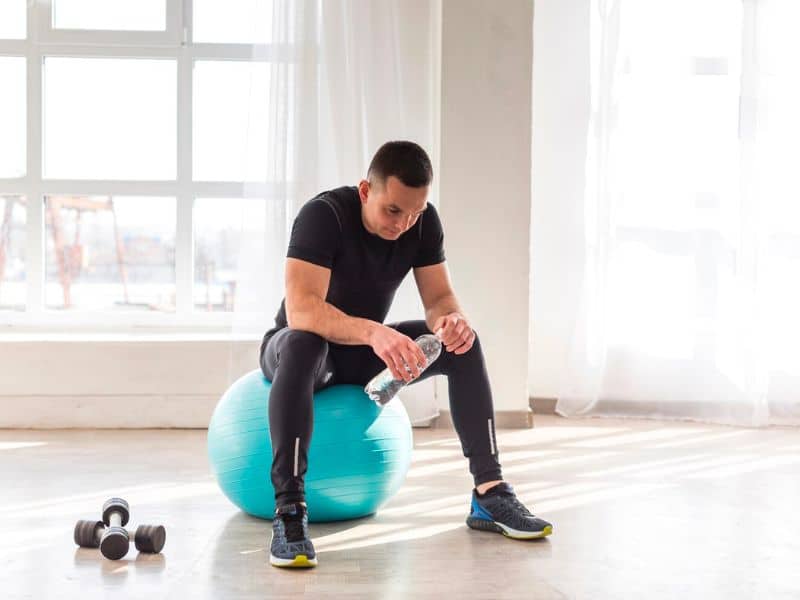
Now, let’s get you started on your strength training journey. Before we dive into specific exercises, remember these crucial steps for setting yourself up for success:
- Warm-up: Just like your car needs to warm up before hitting the highway, so do your muscles. Spend 5-10 minutes on dynamic stretches like jumping jacks, arm circles, and leg swings to get your blood flowing and prepare your body for movement.
- Cool-down: Don’t forget to cool down after your workout. Spend another 5-10 minutes on static stretches to improve flexibility and aid muscle recovery.
- Equipment: You don’t need a fancy gym membership to get started. Grab some dumbbells (water bottles work too.), a yoga mat, and some comfortable workout clothes.
- Safety first: Listen to your body. Start slow, with lighter weights and fewer repetitions, and gradually increase the intensity as you get stronger. If you experience any pain, stop the exercise and consult a healthcare professional.
- Safety first. Always listen to your body and start slow. Don’t hesitate to seek guidance from a certified personal trainer if you’re unsure about the form or have any limitations.
Sample Beginner-Friendly Strength Training Workouts:
Ready to get moving? Here are some effective exercises to target different muscle groups:
Day 1: Lower Body
Lunges:

- Stand with your feet hip-width apart, core engaged, and shoulders back.
- Step forward with one leg, lowering your body until both knees form 90-degree angles.
- Make sure your front knee doesn’t track beyond your toes and your back heel remains lifted off the ground.
- Push through your front heel to return to the starting position.
- Repeat on the other side.
Squats:

- Stand with your feet shoulder-width apart, toes slightly pointed outwards.
- Engage your core and keep your back straight as you lower your body as if sitting in a chair.
- Keep your knees tracking over your toes and ensure they don’t cave inwards.
- Lower yourself until your thighs are parallel to the ground (or as low as comfortable).
- Push through your heels to stand back up to the starting position.
Calf Raises:
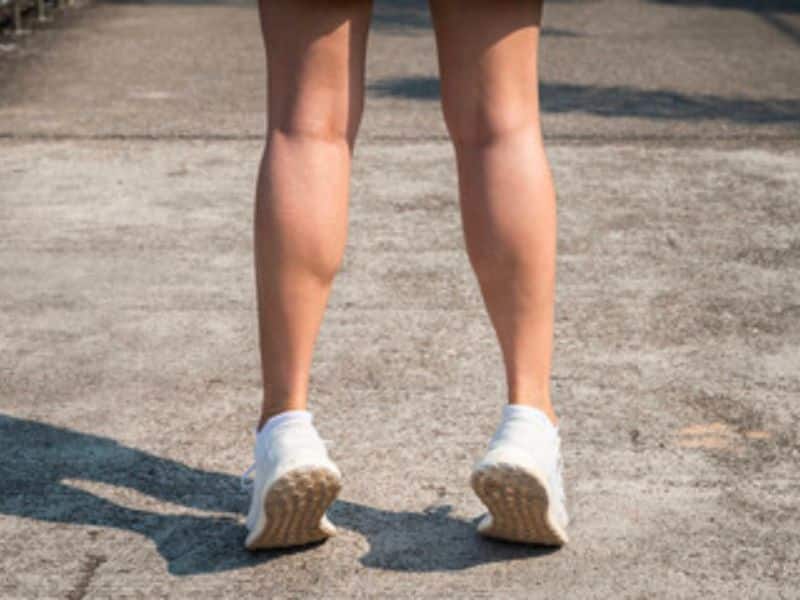
- Stand with your feet shoulder-width apart and hold onto a stable object for balance if needed.
- Rise onto the balls of your feet, squeezing your calves.
- Hold for a second at the top, then slowly lower back down to the starting position.
- Repeat for desired repetitions.
Day 2: Upper Body
Push-ups:
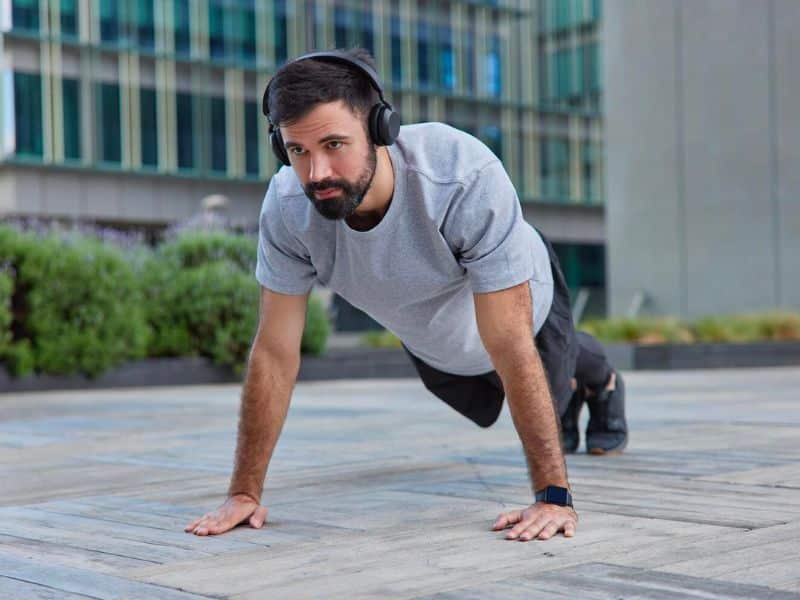
- Start in a high plank position with your hands shoulder-width apart, body in a straight line from head to toe, and core engaged.
- Lower your chest towards the ground, bending your elbows at a 45-degree angle.
- Push back up to the starting position.
Dumbbell Rows:
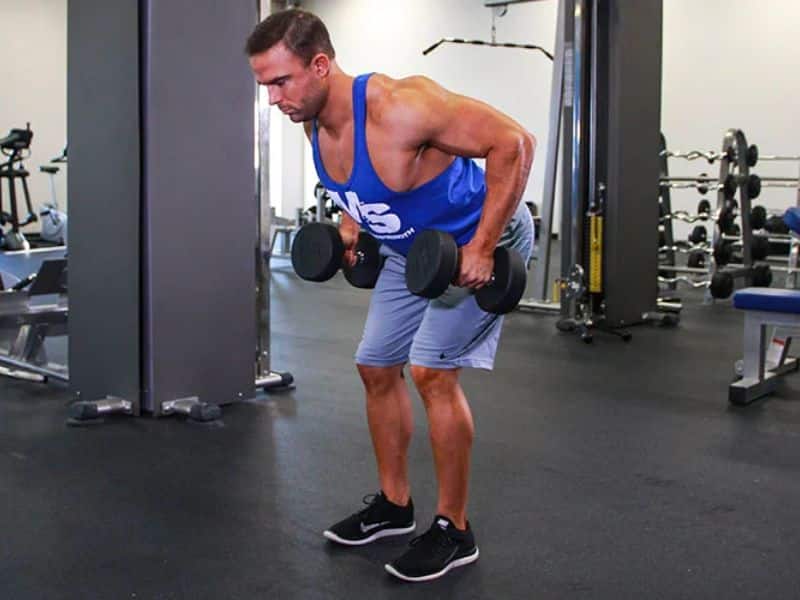
- Stand with your feet hip-width apart, knees slightly bent, and hold a dumbbell in each hand with palms facing inward.
- Hinge at your hips, keeping your back straight and core engaged, and lower the dumbbells towards the ground.
- Squeeze your shoulder blades together as you row the dumbbells up towards your sides.
- Lower the dumbbells back down to the starting position.
Overhead Press:
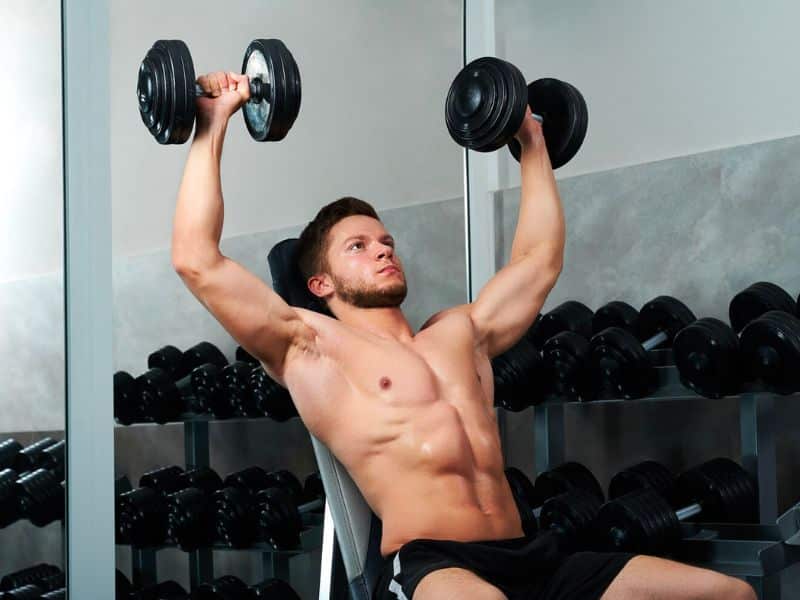
- Stand with your feet shoulder-width apart, core engaged, and hold a dumbbell in each hand.
- Raise the weights overhead, pressing your arms straight up.
- Keep your elbows slightly bent and core engaged throughout the movement.
- Lower the weights back down to shoulder level in a controlled manner.
Day 3: Core and Full Body
Plank:

- Start in a push-up position on your forearms, with your elbows shoulder-width apart.
- Keep your body in a straight line from head to toe, core engaged, and glutes squeezed.
- Hold this position for as long as possible, maintaining proper form.
Bird-Dog:

- Start on all fours with your hands shoulder-width apart and knees hip-width apart.
- Extend one arm straight out in front of you, keeping your shoulder in line with your ear.
- Simultaneously extend the opposite leg straight out behind you, keeping your core engaged and back flat.
- Hold for a few seconds, then return to the starting position.
- Repeat on the other side.
Mountain Climbers:
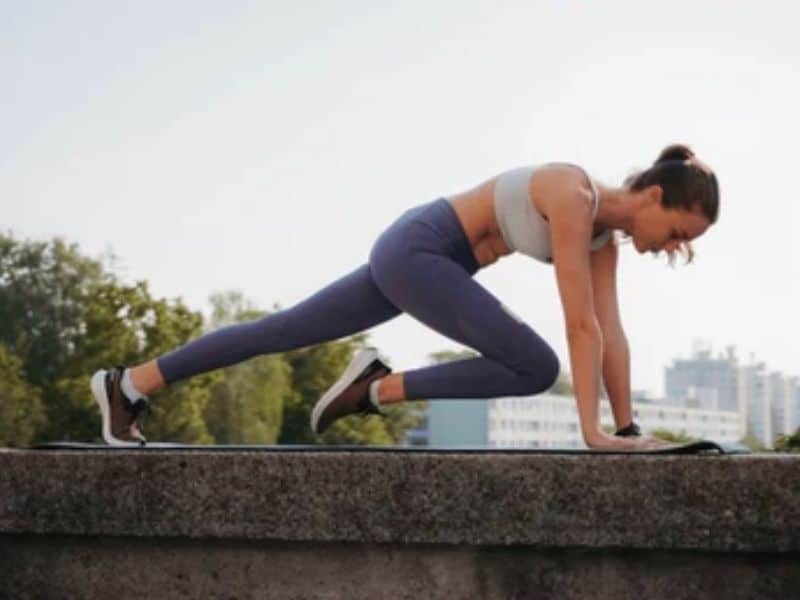
- Start in a high plank position with your hands shoulder-width apart and your body in a straight line from head to toe.
- Quickly alternate bringing your knees towards your chest, one at a time.
- Maintain a fast pace while keeping your core engaged and hips low.
- Continue for desired repetitions.
Recharging Your Body for Success: Rest and Recovery

Just like your phone needs to charge, so do your muscles. Rest days are crucial for muscle recovery. After a workout, your muscles experience microscopic tears that need time to repair and rebuild stronger. Aim for at least one to two rest days per week to allow your body to recover and prevent injury.
Sleep plays a vital role not just in muscle building but also in overall health. While you sleep, your body releases hormones that promote muscle growth and repair. Aim for 7-8 hours of quality sleep each night to optimise your recovery and support your fitness goals.
Building a Sustainable Routine: Progressing with Purpose

Progression is key to continuous improvement. As you get stronger, gradually increase the difficulty of your workouts to keep challenging your muscles and promoting further growth. Here are some ways to progress:
- Increase repetitions (reps): Start with 10-12 reps per set and gradually increase to 15-20 reps as you get stronger.
- Increase sets: Start with 2-3 sets per exercise and gradually increase to 3-4 sets as you get stronger.
- Increase weight (if using dumbbells): Once you can comfortably perform the desired reps and sets with a certain weight, gradually increase the weight to challenge yourself further.
- Shorten rest periods: Start with 30-60 seconds of rest between sets and gradually decrease as your endurance improves.
Keeping the Spark Alive: Motivation and Goal Setting

Staying motivated can be challenging, but remember, consistency is key to long-term success. Here are some tips to stay motivated:
- Set realistic and achievable goals: Don’t aim for overnight success. Celebrate your progress, no matter how small.
- Find a workout buddy: Having someone to hold you accountable and make workouts more enjoyable can significantly boost motivation.
- Follow fitness influencers: Find inspiration and motivation from fitness influencers who resonate with you. You can find free workout routines and motivational content online.
- Track your progress: Seeing your improvements, even small ones, can be a powerful motivator. Use a journal or app to track your workouts, reps, sets, and weight.
Sample Weekly Schedule:
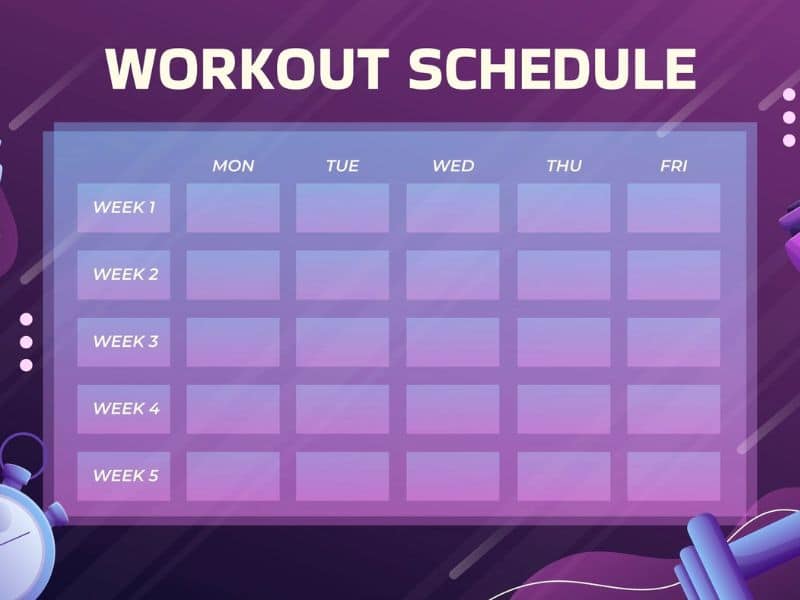
Week 1:
- Monday: Lower Body Workout (Day 1)
- Wednesday: Upper Body Workout (Day 2)
- Friday: Rest
Week 2:
- Monday: Core & Full Body Workout (Day 3)
- Wednesday: Lower Body Workout (Day 1)
- Friday: Rest
Week 3 and beyond:
- Continue rotating through the workouts, gradually increasing difficulty as you get stronger.
- Add an extra rest day if needed.
Fueling Your Journey: Nutrition for Weight Loss and Muscle Building

Remember, diet plays a crucial role in both weight loss and muscle building. While this guide focuses on exercise, a healthy diet is essential for optimal results.
Eating whole, unprocessed foods, getting enough protein, and staying hydrated will support your body’s needs for both recovery and building muscle.
Protein is vital for muscle building and repair. Aim to consume 0.8-1 gram of protein per kilogram of body weight per day.
You can find protein in various sources, including lean meats, poultry, fish, eggs, dairy products, beans, lentils, and nuts.
Hydration is crucial for overall health and exercise performance. Drink plenty of water throughout the day, especially before, during, and after your workouts. Aim for 8 glasses of water per day, adjusting based on your activity level and climate.
Consulting a registered dietitian or nutritionist can help you create a personalized dietary plan that aligns with your specific goals and preferences.
They can guide on choosing the right foods, portion sizes, and ensuring you’re getting the necessary nutrients to fuel your workouts and promote your overall health.
Also Read:
Conclusion
Strength training is a powerful tool for weight loss, overall health, and building confidence. Remember, progress takes time, consistency is key, and celebrating yourself journey is essential.
Embrace the challenges, empower yourself, and watch yourself transform into the strongest, healthiest version of you.
This guide is just the beginning. With dedication and the right tools, you can achieve amazing things.

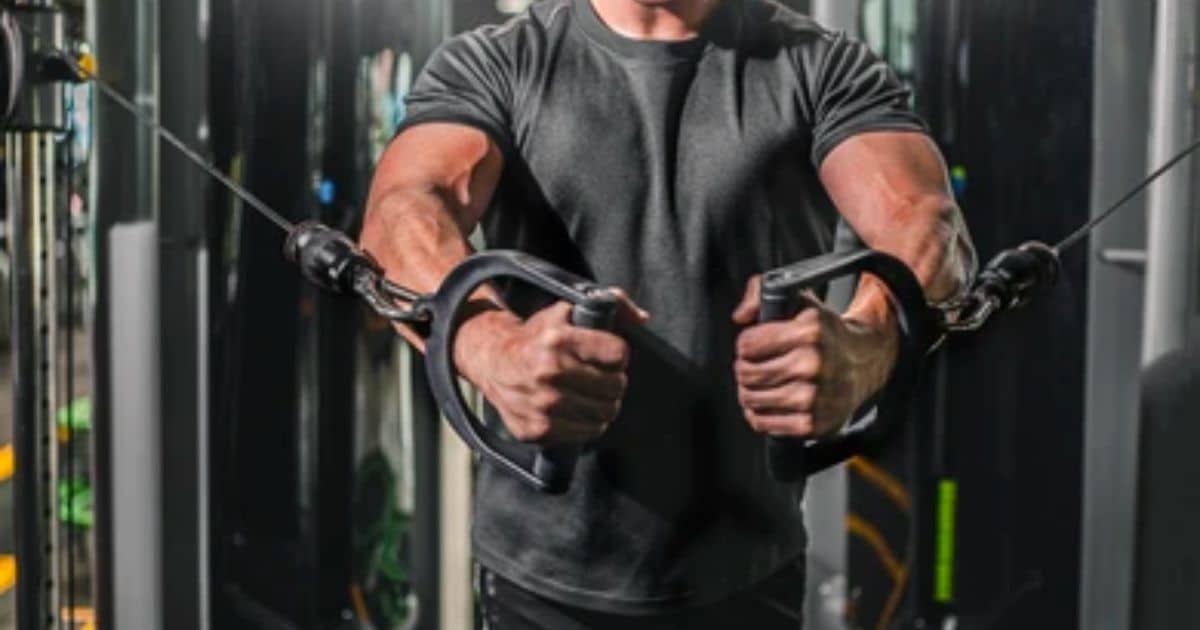
This platform is unbelievable. The magnificent data uncovers the creator’s excitement. I’m shocked and expect additional such mind blowing entries.
This asset is unbelievable. The wonderful information exhibits the creator’s earnestness. I’m stunned and anticipate more such astonishing entries.
Thanks
This website is amazing. The excellent content demonstrates the creator’s passion. I’m in disbelief and hope to see more of this incredible content.